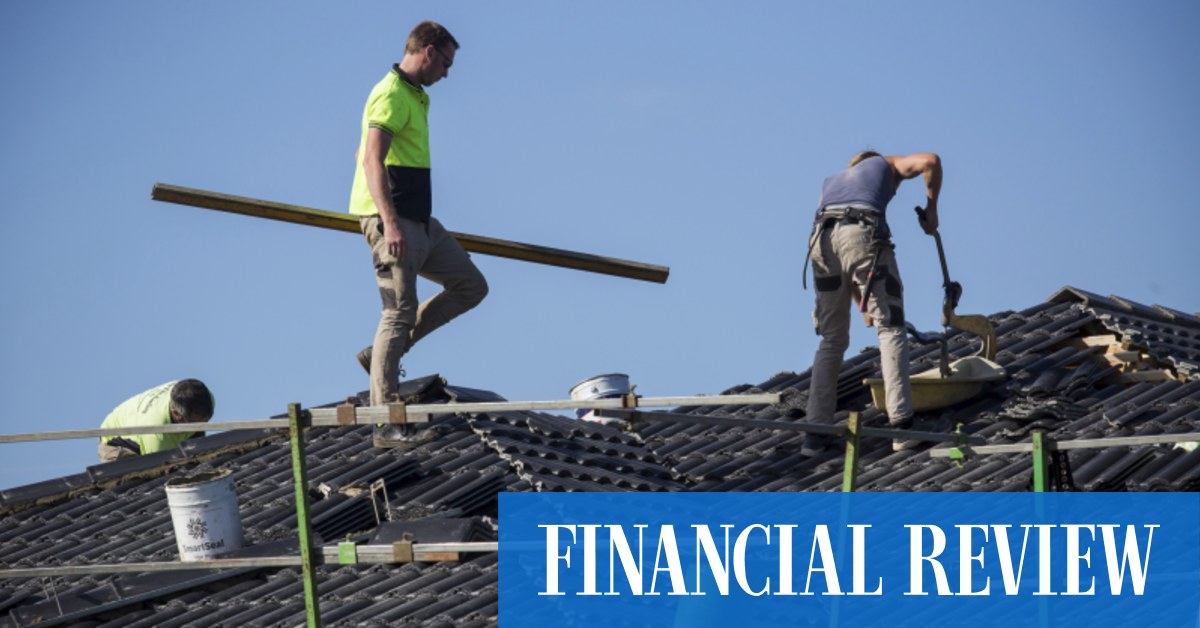
The company, which in March tried to renegotiate contracts with Queensland clients – a move it reversed after the state government said there was no legal basis for clients to pay more – said it would not attempt to alter “valid” contracts with customers.
“Metricon is committed to fulfilling every valid contract in which a fixed price has been agreed.” said Patrick Eather, the company’s general manager for NSW.
But with the supply shortages affecting the whole sector, rather than just one company, there’s no guarantee any other builder could take on a Metricon job any more cheaply than the country’s largest home builder.
A rule of thumb in a new home build is that materials account for 45-50 per cent of total costs, labour 35-40 per cent and profit margin 15-20 per cent – excluding land, taxes and other charges.
Wholesale, or producer price figures for the March quarter show the biggest material cost increases over the four quarters were in reinforcing steel, which rose 43.5 per cent, structural timber, which jumped 39.2 per cent and plastic pipes and fittings which gained 26.5 per cent.
The construction industry early on anticipated that the pandemic would push up costs of materials and labour, and it was right.
Shortages of materials across the board were surging by mid-2021 – a little-known polystyrene product used in housing slabs called waffle pods was particularly hard to come by – and in February Simonds Group plunged to a first-half $5.2 million loss as a result of crimped supply of materials and labour, along with COVID-19 restricting on-site activity.
In March, the invasion of Ukraine dealt a further blow to already-stretched global supply chains, when retailer Bunnings ordered suppliers to stop buying “conflict timber” from Russia in the wake of declarations earlier that month by global forestry bodies about timber from that country and ally Belarus.
Housing Industry Association numbers show that home building-related trades costs rose 2.1 per cent in the March quarter and were up 5.1 per cent from a year earlier. Bricklayers, carpenters and painters showed the most cost increases.
The big exception to rising prices across the board was a 12 per cent drop in the cost of trades for site preparations. This reflected the hangover from a year earlier, when home buyers and builders rushed in the March quarter to kick off construction of their HomeBuilder-subsidised dwellings, HIA executive director for industry policy Geordan Murray said.
“There was a massive spike as everybody tried to get their slab down,” Mr Murray said.
The rising costs are now depressing home building. Activity in both house-building and apartment construction fell in May, industry figures published in the Ai Group-HIA performance of construction index show, as disrupted supply, cost increases and difficulty filling positions pushed out project completion times.
“Some house builders reported falling demand by customers concerned about price escalation and higher interest rates,” the PCI report said.
One positive sign is that the pace of growth in building cost inflation may now have peaked.
“The cost of materials isn’t going to increase in the next 12 months like it did in the past 12 months,” said HIA chief economist Tim Reardon.
That doesn’t mean costs will fall – as other economists have also cautioned – but simply that the rate of gain will slow, he said.
This creates a separate concern. The delays pushing out new already-contracted housing work could encourage the RBA to raise rates higher that it would have otherwise done – because the sector will keep ticking over employing people and obscuring the effect of rising rates on the rest of the economy, Mr Reardon said.
“They risk overshooting,” he said. “The lag between rate rises and a decline in housing starts is more than 12 months, whereas in 2010 it was about six months. There’s just that much work in the pipeline.”








